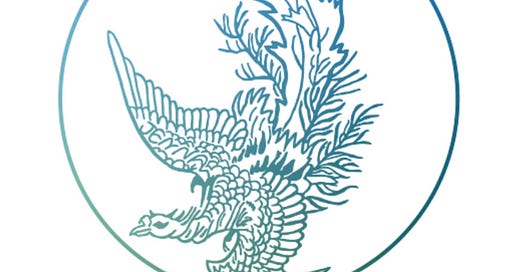I just got off the phone call for an AMARIMA project that inspired me to write to you here.
I said pretty much exactly this:
“Do you have a minute to talk about the sensory elements? Awesome. So for lighting, I’m thinking that we have handheld globe lights - warmish yellow soft LED spheres. This way, someone looking out across the garden will see these floating in the night - this effect will be even more magical as the sun goes down and we get the pinks and purples from the sunset interacting with the scene. Then, I think we should each walk around with gold body paint. We can create a ritual around dabbing the guests with it - a thumbprint on a cheek or brow, or they can create their own designs - making it the “cool kid” thing to have at the party, signaling that they need to come to us and experience what we have to offer in order to get it. This gold will also reflect off the lights, and create an atmospheric element that ties the guests into the scene - helping them all get a bit more corporeal with us. Then, I was thinking of creating a few signature scents, based on certain emotions, which guests can choose to spritz themselves with. The only other update I have for you is just a highlight that for the altar for the wishkeeper, I’d like to source natural materials from the location itself - blossoms, tree branches, shells, sand, some salts, so I’ll be taking time to do that the morning of. Oh and do you know if I can fly with incense packed in my bag? Little wisps of smoke at the altar will be gorgeous.”
All of this is sensorial design.
When it’s done well, it can take an already incredible experience and elevate it to an unforgettable visceral moment.
When it’s done poorly, like a plastic LED candle (number one vibe killer - you could never convince me otherwise) it completely ruins the feel and makes a moment feel cheap.
Sensorial design is so much more than perfume, but scent is incredibly evocative and it needs to be designed into what we experience so much more.
Why do you wear a scent? Use a specific shampoo (yes - still a scent)?
It’s part of how you curate the experience of you, for the people around you.
Places also have scents, but not just in the most obvious way that you might be thinking of - at a store or in a hotel lobby.
For instance, at the park around the corner from where I live there’s a wall of jasmine in full bloom.
This was planted intentionally because we all love flowers, and especially the scent of jasmine.
It makes my almost-daily walk through this park a gorgeous experience.
The moment that I breathe in as I round the corner and inhale jasmine.
This smell is the exact same scent as last year at this time, pinning me in late May, early June, in Barcelona, making me think of where I was at last year when I rounded the same corner, what was happening in my life then.
This is sensorial design.
Food, music, textures are all part of this too. Anything that really grounds you in your body.
We are all little animals, body and mind, and we love engaging with our senses.
What are yours saying?
What do they want today?
How do you feel?
What do you want to taste today?
x
Jenna




